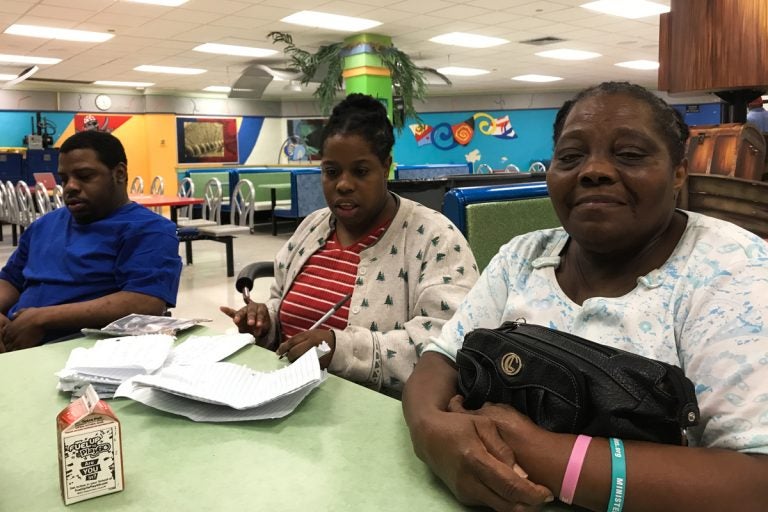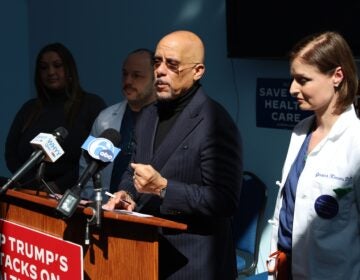During Irma, some Miami evacuees felt left behind in their own city
As the hurricane threatened, Miami-Dade County opened more than 40 shelters for people who needed a safe place to go. Some low-income, vulnerable people needed more support.
Listen 4:48
José, Nelly and Gloria Guity in the cafeteria of Miami Edison Senior High School the day before Irma hit Miami. (Kate Stein/WHYY)
When there’s a hurricane looming, emergency planners try to get the word out about how to prepare and, if necessary, evacuate. In September, when Hurricane Irma was threatening the Florida coast, many people who had cars — or could afford a plane ticket — left town. For others who needed a safe place to go, Miami-Dade County opened more than 40 shelters.
WLRN journalist Kate Stein spent three nights at a shelter speaking with people and reporting on the storm preparations. About 500 evacuees eventually made their way to Miami Edison Senior High School. Among the crowd were Gloria Guity, 76, and her two adult children, José, 32, and Nelly, 38. Both have cerebral palsy, and Gloria took care of them herself because the shelter wasn’t equipped for people with special medical needs.
It was set up as a general-population shelter. There were no cots, not even for the elderly. Food was limited for homeless and low-income people who didn’t have the means to stock up on extra supplies.
Some people brought blankets or portable mattresses, but many evacuees slept on the red tile floor — or tried to. The lights stayed on all night, and sleep was hard to come by.
Stein met the Guity family Saturday morning, the day before the worst of Irma hit Miami. The cafeteria was clearing out as people finished breakfast — a scoop of eggs, a biscuit, and a juice pouch.
Listen to Kate Stein’s story above or read her post-storm debrief with county officials.
WHYY is your source for fact-based, in-depth journalism and information. As a nonprofit organization, we rely on financial support from readers like you. Please give today.






